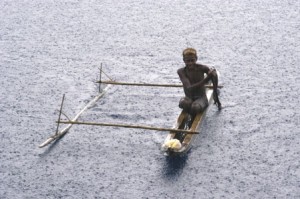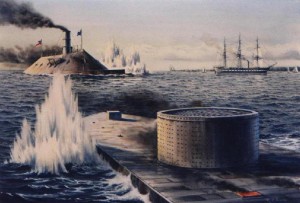 Welcome to the next part in our History of Transportation series: Boats!
Welcome to the next part in our History of Transportation series: Boats!
Many thousand years ago, the first boats were canoes – burned, scraped, or otherwise dug out logs. Some people began adding sails and outriggers (floats extending away from the hull to prevent overturning). As boats got bigger, the trade and military applications became obvious. Egyptians formed the first navy around 3,000 BCE.
The Greeks created large, weaponized galleys around 2,000-1,000 BCE. Galleys, with rows of oars and high sails, protected Greek trade routes and coastlines. The first recorded naval battle occurred in 480 BCE, when the Athenians defeated the Persian fleet near the island of Salamis. Meanwhile, Odysseus’s naval odyssey etched itself in folklore. Greek naval superiority ceded to the Romans.
 Northern Europe entered its golden age of seafaring around the 8th century CE. Vikings raided coastal settlements all over western Europe, and even reached North America. Western Europeans began to discover that boats with larger, deeper hulls were faster and could travel in rougher water than more shallow galleys. Sails became more common, though many boats also used oars as a backup system.
Northern Europe entered its golden age of seafaring around the 8th century CE. Vikings raided coastal settlements all over western Europe, and even reached North America. Western Europeans began to discover that boats with larger, deeper hulls were faster and could travel in rougher water than more shallow galleys. Sails became more common, though many boats also used oars as a backup system.
Meanwhile, between 1405 and 1433, Chinese Admiral Zheng He led several naval expeditions, establishing China as the unchallenged naval power in the Indian Ocean, Middle East, and to the eastern coast of Africa. China maintained its naval hegemony until it withdrew from contact with foreigners entirely.
Back in the Mediterranean, the Italian city of Venice had inherited naval control. In 1400, Venice had 3,000 gallies. Their chief rival were the Ottomans. A battle in 1571 near Lepanto in Greece proved to be the last great naval battle between gallies.
In the 1500s, Spain and England sparred for control of the Atlantic in large new galleons. Galleons, each with three distinctive masts, traveled back and forth to the New World. When the Spanish and English galleons set against each other, the smaller, faster, and more maneuverable English ships won the day, and England ruled the Atlantic for centuries. Only the Dutch were able to mount a viable (but ultimately inferior) opposition. Shipbuilders began experimenting with more and more sails, which they learned could make more agile and speedy ships.
 The next major leap in naval technology was an American one – steam. Steamships were faster than sailing ships, and didn’t rely on wind. On the downside, they required fuel so navies began establishing fueling stations overseas.
The next major leap in naval technology was an American one – steam. Steamships were faster than sailing ships, and didn’t rely on wind. On the downside, they required fuel so navies began establishing fueling stations overseas.
Meanwhile, the development of explosive shells (as opposed to heavy cannonballs), transformed naval battle. The Russian Empire was the first to use explosive shells in 1853, and their impact on the wooden boats of the Ottoman fleet was devastating. Iron hulls were the next logical step. During the American Civil War, the battle of the Monitor and the Merrimack was the first battle between two iron-armored ships and two steamships (neither ship was sunk). The British developed the lethal Dreadnought, which had enough guns and speed to launch a shipbuilding arms race between Britain and Germany.
The global wars of the 20th Century saw a proliferation of new naval technologies – torpedoes, submarines, radar, sonar, depth charges, aircraft carriers, not to mention plastic and fiberglass. The US launched the world’s first nuclear-powered submarine in 1954 – the Nautilis. The nuclear-powered aircraft carrier Enterprise launched in 1961.
Today boats provide a plethora of useful, tactical and recreational applications.
